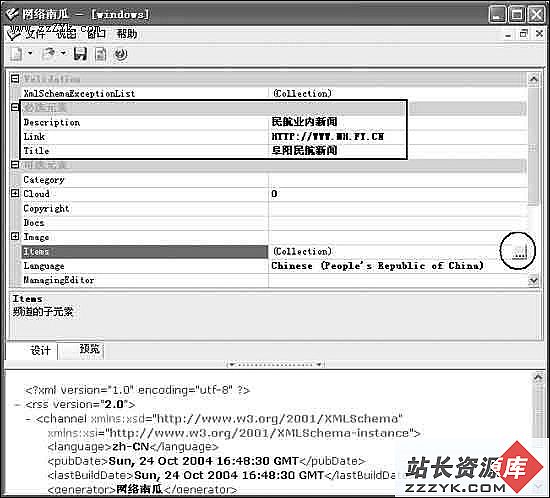设计模式-适配器模式(Apater)
【描述】适配器模式将某个对象的接口适配为另一个对象所期望的接口。
【UML图】

图1 Apater模式
(1) 已知Apatee类,该类提供了画线的函数实现;
(2) 现在用户要求绘制点,我们知道如果将画线函数起点和终点坐标取一致,实际上就相当于绘制了点。于是决定采用适配器模式将画线函数适配为画点函数。
【代码清单】
apatee.h
[html]
#ifndef APATEE_H
#define APATEE_H
class Apatee
{
public:
Apatee();
public:
void draw(int x0, int y0, int x1, int y1);
};
#endif // APATEE_H
#ifndef APATEE_H
#define APATEE_H
class Apatee
{
public:
Apatee();
public:
void draw(int x0, int y0, int x1, int y1);
};
#endif // APATEE_H
apatee.cpp
[html]
#include <QDebug>
#include "apatee.h"
Apatee::Apatee()
{
qDebug()<<"construct Apatee";
}
void Apatee::draw(int x0, int y0, int x1, int y1)
{
qDebug()<<QString("Apatee::draw(int %1, int %2, int %3, int %4)").arg(x0).arg(y0).arg(x1).arg(y1);
}
#include <QDebug>
#include "apatee.h"
Apatee::Apatee()
{
qDebug()<<"construct Apatee";
}
void Apatee::draw(int x0, int y0, int x1, int y1)
{
qDebug()<<QString("Apatee::draw(int %1, int %2, int %3, int %4)").arg(x0).arg(y0).arg(x1).arg(y1);
}
apater.h
[html]
#ifndef APATER_H
#define APATER_H
#include "apatee.h"
class Apater : public Apatee
{
public:
Apater(Apatee adaptee);
private:
Apatee apatee;
public:
void draw_dot(int x, int y);
};
#endif // APATER_H
#ifndef APATER_H
#define APATER_H
#include "apatee.h"
class Apater : public Apatee
{
public:
Apater(Apatee adaptee);
private:
Apatee apatee;
public:
void draw_dot(int x, int y);
};
#endif // APATER_H
apater.cpp
[html]
#include <QDebug>
#include "apater.h"
Apater::Apater(Apatee adaptee)
{
qDebug()<<"construct Apater";
this->apatee = apatee;
}
void Apater::draw_dot(int x, int y)
{
qDebug()<<(QString("Apater::draw_dot(int %1, int %2)").arg(x).arg(y));
apatee.draw(x, y, x, y);
}
#include <QDebug>
#include "apater.h"
Apater::Apater(Apatee adaptee)
{
qDebug()<<"construct Apater";
this->apatee = apatee;
}
void Apater::draw_dot(int x, int y)
{
qDebug()<<(QString("Apater::draw_dot(int %1, int %2)").arg(x).arg(y));
apatee.draw(x, y, x, y);
}
【运行结果】
[html]
construct Apatee
construct Apatee
construct Apatee
construct Apater
"Apater::draw_dot(int 1, int 2)"
"Apatee::draw(int 1, int 2, int 1, int 2)"
construct Apatee
construct Apatee
construct Apatee
construct Apater
"Apater::draw_dot(int 1, int 2)"
"Apatee::draw(int 1, int 2, int 1, int 2)"
【分析】
适配器模式实际上,也可采用继承实现。继承Apatee类后,Apater类中直接调用父类方法。即将
[html]
apatee.draw(x, y, x, y);
apatee.draw(x, y, x, y);替换为
[html] view plaincopyprint?draw(x, y, x, y);
draw(x, y, x, y);
【实例剖析】
MD5算法的Qt实现一文代码中,update()函数实际上就是应用了适配器模式的思想。
我们要实现的update接口包括:
[html]
private:
void update(const byte* input, size_t length);
public:
void update(const void* input, size_t length);
void update(const QString& str);
void update(ifstream& in);
private:
void update(const byte* input, size_t length);
public:
void update(const void* input, size_t length);
void update(const QString& str);
void update(ifstream& in);
但实际上,我们只需实现一个接口(这个接口是私有的):
[html]
void update(const byte* input, size_t length);
void update(const byte* input, size_t length);
实现代码
[html]
void MD5::update(const byte *input, size_t length)
{
uint32 i, index, partLen;
_finished = false;
/* Compute number of bytes mod 64 */
index = (uint32)((_count[0] >> 3) & 0x3f);//0x3f = 63
/* update number of bits */
if ((_count[0] += ((uint32)length << 3)) < ((uint32)length << 3))
{
++_count[1];
}
_count[1] += ((uint32)length >> 29);
//qDebug()<<_count[0]<<_count[1];
partLen = 64 - index;
/* transform as many times as possible. */
if (length >= partLen)
{
memcpy(&_buffer[index], input, partLen);
transform(_buffer);
for (i = partLen; i + 63 < length; i += 64)
{
transform(&input[i]);
}
index = 0;
}
else
{
i = 0;
}
/* Buffer remaining input */
memcpy(&_buffer[index], &input[i], length - i);
}
/*
MD5 finalization. Ends an MD5 message-_digest operation, writing the
the message _digest and zeroizing the context.
*/
void MD5::final()
{
byte bits[8];
uint32 oldState[4];
uint32 oldCount[2];&nb
补充:web前端 , HTML 5 ,




